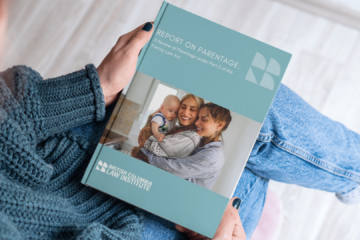A closer look at the Report on Modernizing the Child, Family and Community Service Act: Emotional harm
June 30, 2021
BY Kevin Zakreski
This post is part of a series highlighting recommendations in the Report on Modernizing the Child, Family and Community Service Act. For other posts in the series click here.
Should the ground for protection relating to emotional harm of a child be expanded from circumstances in which a child is emotionally harmed to embrace circumstances in which a child has been or is likely to be emotionally harmed?
Brief description of the issue
The Child, Family and Community Service Act’s ground for protection relating to emotional harm of a child only applies if the child is emotionally harmed. That is, its focus is only on past or ongoing current events, which place the child at need of protection. In contrast, four other grounds for protection apply to past, current, and future events, by virtue of language stating, if the child has been, or is likely to be. Should the ground for protection for emotional harm be amended to adopt similar language, which would expand its reach to embrace events that may occur in the future?
Discussion of options for reform
There are essentially two options to consider for this issue. The first would be to propose an amendment to section 13 (1) (e), replacing the word is with has been, or is likely to be. This would make paragraph (e) consistent with paragraphs (a) to (d) and would broaden the reach of the provision to incorporate cases in which emotional harm of the child is a likely future event. Extending the reach of section 13 (1) (e) could be seen as an amendment that is in harmony with the broader purposes of section 13 and the Act as a whole, which have been described as being “to provide for the protection of every child who needs protection.” This proposed change would also bring paragraph (e) into line with the preceding four paragraphs of the subsection, promoting consistency of language within the provision.
The other option would be to endorse the status quo. Retaining the current provision could be appropriate if it’s seen to be functioning well. It may also be seen as a better option than extending the ground for protection to embrace the potential of emotional harm to a child in the future. This extension could make decision-making more difficult, by focusing attention on forecasting possible developments in the future. It could also lead to more children being taken into care. There has been academic criticism of the existing provisions that contain the words likely to be.
The committee’s recommendation for reform
In the consultation paper, the committee tentatively recommended making the ground for protection relating to emotional harm consistent with the four grounds for protection that precede it. This would mean replacing the word is with the formulation used in the other four grounds: has been, or is likely to be.
Although the committee was concerned that this proposal would broaden the ground for protection relating to emotional harm, which could result in more children being taken into care, the committee initially felt that there are ways to mitigate this concern. In particular, there is the existing interpretive provision in section 13, which limits the reach of emotional harm to only those cases that produce specific effects in children (“anxiety, depression, withdrawal, or self-destructive or aggressive behaviour”).
Consultation respondents were divided in their responses to this proposal. While many agreed with the committee, a slight majority disagreed. The respondents who disagreed with the committee’s tentative recommendation tended to cite the concern mentioned in the previous paragraph. Revising this ground for protection, even if the revision is only intended to harmonize its language with that used in the other grounds for protection, poses too great a risk that the legislative change will in practice result in more children being taken into care.
These consultation responses gave the committee pause. It reconsidered this issue for reform in light of them. While committee members have some sympathy with the goal of making the language in section 13 (1) consistent, the committee ultimately decided that the gains from this reform would be outweighed by the risks it could create regarding taking more children into care.
The committee recommends:
Section 13 (1) (e) of the Child, Family and Community Service Act should not be amended by striking out “is” and replacing it with “has been, or is likely to be.”











































